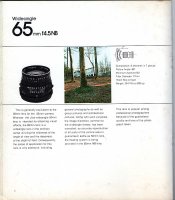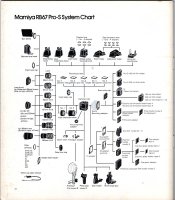Obviously, another BR67 lens having floating elements is the 100-200mm zoom. If one finds those excellent primes too much sharp then he may get a zoom

It should be noted that "usually" floating elements design is a source for some performance loss.
Instead in the RB67 case (with the zoom exception) those primes have the floating element for distance optimization purposes, which is a different situation than having the floating element for focus and having this an impact in the peak performance. That floating glas is to optimize performance, not for another thing and damaging optimization.
"Unit Focus" is great for easy performance and for construction/design simplicity, drawbacks are "focus breathing" (not always a drawback) and exposure correction need (also not a drawback for TTL metering).
Some other lenses like the cheap/superb Nikon 50mm f/1.8AF are not Internal Focus, but Unit Focus, the ring displaces all the glass at the same time, probably because of that the cheap/simple 1.8AF is slightly (peak) sharper than the more expensive 1.4AF.
Those RB67 glasses perform crazy good !!! And the best... they have a very refined bokeh which for many it is more important than peak performance.







